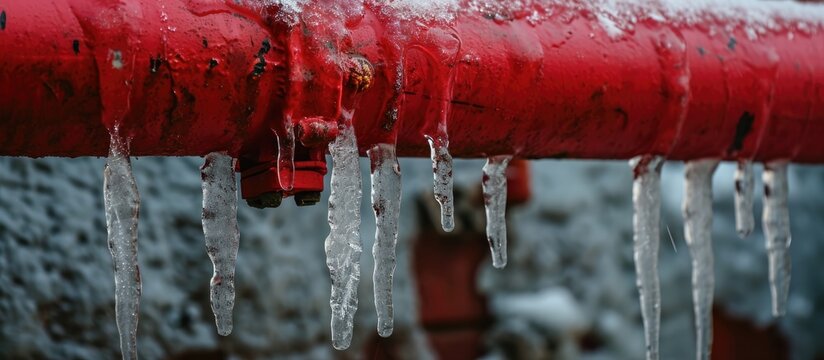How to Protect Your Pipes from Freezing: Specialist Tips
How to Protect Your Pipes from Freezing: Specialist Tips
Blog Article
Here below you can locate additional wonderful answers regarding How to Prevent Your Pipes From Freezing.

Winter can damage your plumbing, specifically by freezing pipelines. Here's how to avoid it from happening and what to do if it does.
Intro
As temperature levels decline, the danger of frozen pipelines increases, possibly leading to expensive fixings and water damage. Comprehending just how to avoid icy pipelines is crucial for property owners in chilly environments.
Avoidance Tips
Protecting prone pipelines
Wrap pipes in insulation sleeves or use heat tape to shield them from freezing temperature levels. Concentrate on pipes in unheated or external locations of the home.
Home heating methods
Keep indoor areas effectively heated up, especially locations with pipes. Open cupboard doors to allow warm air to distribute around pipelines under sinks.
Just how to identify frozen pipelines
Seek lowered water flow from taps, unusual smells or noises from pipes, and visible frost on exposed pipelines.
Long-Term Solutions
Structural modifications
Think about rerouting pipelines away from outside wall surfaces or unheated locations. Include additional insulation to attics, basements, and crawl spaces.
Upgrading insulation
Buy top quality insulation for pipelines, attic rooms, and walls. Proper insulation aids keep constant temperatures and lowers the danger of frozen pipelines.
Safeguarding Exterior Pipes
Garden hoses and outdoor faucets
Disconnect and drain yard hoses prior to winter. Mount frost-proof spigots or cover exterior taps with protected caps.
Recognizing Frozen Pipelines
What triggers pipes to freeze?
Pipelines freeze when exposed to temperature levels below 32 ° F (0 ° C) for expanded durations. As water inside the pipelines ices up, it increases, putting pressure on the pipeline walls and potentially causing them to rupture.
Dangers and damages
Icy pipes can cause supply of water interruptions, building damage, and expensive repairs. Ruptured pipes can flood homes and create substantial architectural damage.
Indicators of Frozen Water Lines
Identifying frozen pipelines early can stop them from breaking.
What to Do If Your Pipelines Freeze
Immediate activities to take
If you believe frozen pipelines, maintain faucets open up to eliminate pressure as the ice melts. Utilize a hairdryer or towels soaked in hot water to thaw pipelines gradually.
Verdict
Stopping frozen pipes calls for positive steps and fast reactions. By comprehending the reasons, indicators, and safety nets, home owners can safeguard their plumbing throughout cold weather.
5 Ways to Prevent Frozen Pipes
Drain Outdoor Faucets and Disconnect Hoses
First, close the shut-off valve that controls the flow of water in the pipe to your outdoor faucet. Then, head outside to disconnect and drain your hose and open the outdoor faucet to allow the water to completely drain out of the line. Turn off the faucet when done. Finally, head back to the shut-off valve and drain the remaining water inside the pipe into a bucket or container. Additionally, if you have a home irrigation system, you should consider hiring an expert to clear the system of water each year.
Insulate Pipes
One of the best and most cost-effective methods for preventing frozen water pipes is to wrap your pipes with insulation. This is especially important for areas in your home that aren’t exposed to heat, such as an attic. We suggest using foam sleeves, which can typically be found at your local hardware store.
Keep Heat Running at 65
Your pipes are located inside your walls, and the temperature there is much colder than the rest of the house. To prevent your pipes from freezing, The Insurance Information Institute suggests that you keep your home heated to at least 65 degrees, even when traveling. You may want to invest in smart devices that can keep an eye on the temperature in your home while you’re away.
Leave Water Dripping
Moving water — even a small trickle — can prevent ice from forming inside your pipes. When freezing temps are imminent, start a drip of water from all faucets that serve exposed pipes. Leaving a few faucets running will also help relieve pressure inside the pipes and help prevent a rupture if the water inside freezes.
Open Cupboard Doors
Warm your kitchen and bathroom pipes by opening cupboards and vanities. You should also leave your interior doors ajar to help warm air circulate evenly throughout your home.

Do you like reading up on How To Avoid Freezing Pipes? Place a comment further down. We will be pleased to know your views about this post. In hopes that you come back again before long. Sharing is nice. You just don't know, you may very well be helping someone out. Thanks so much for your time spent reading it.
Visit Our Website Report this page